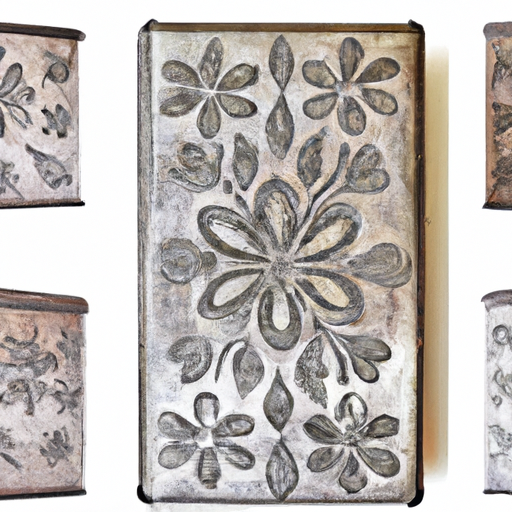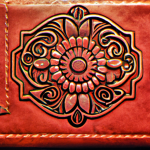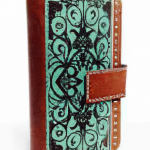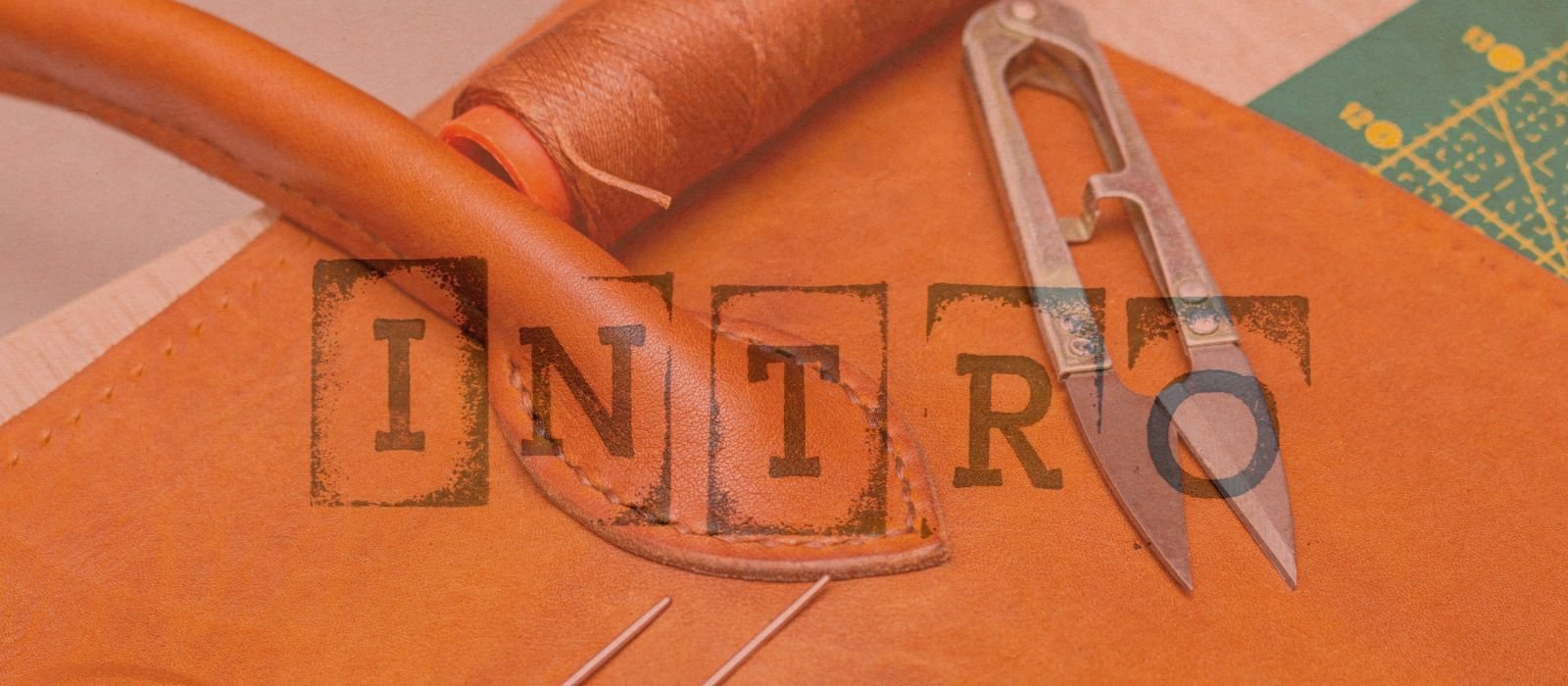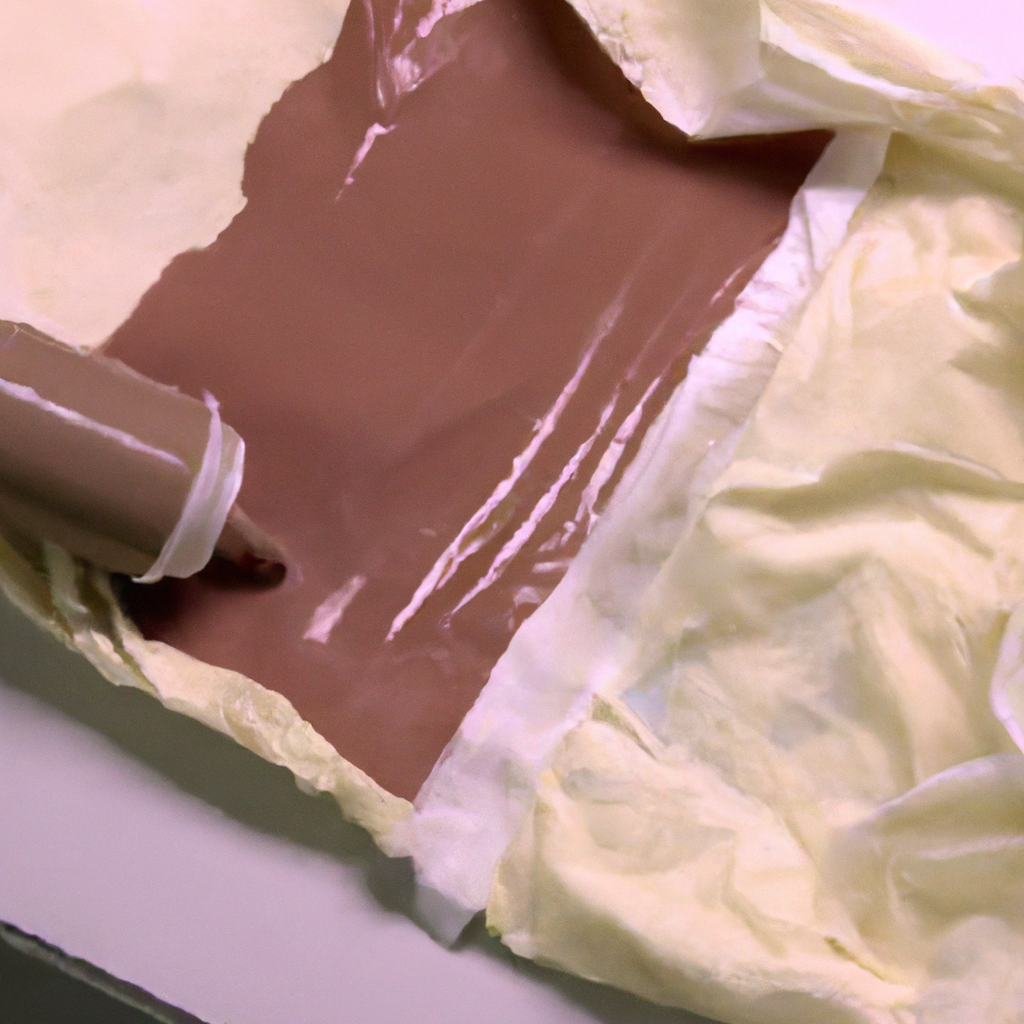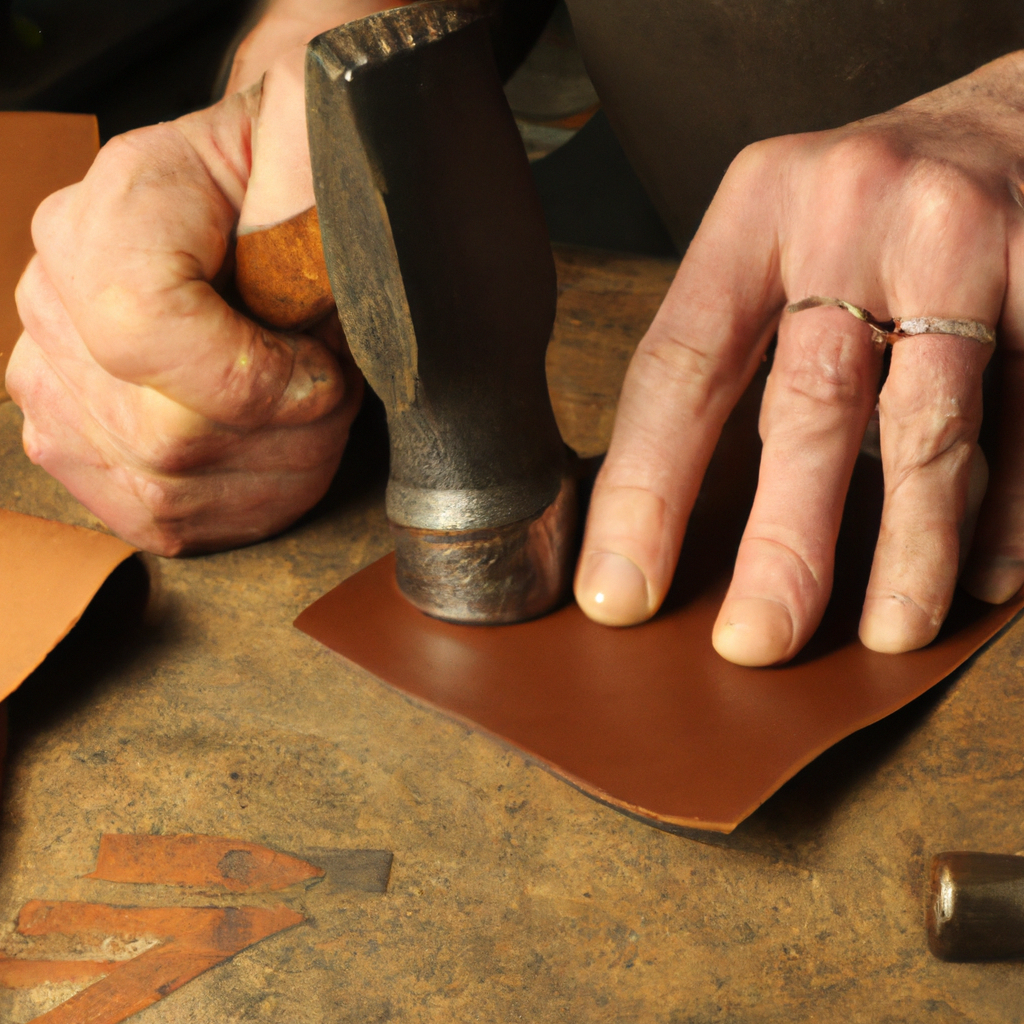How Can I Develop A Western Floral Tooling Pattern?
If you’ve ever admired the intricate beauty of Western floral tooling patterns and wondered how to create your own, look no further. Learning the art of designing and planning these stunning patterns is simpler than you may think. By following a few key steps and practicing with the right tools, you’ll soon be able to bring your own creative visions to life on leather and other materials. Whether you’re a beginner or an experienced crafter looking to expand your skills, this article will provide you with all the guidance you need to start designing and planning your very own western floral tooling patterns.What is Western floral tooling?
Western floral tooling is a traditional form of leatherwork that involves carving and stamping intricate floral designs onto leather. It originated in the American West and has a rich history dating back to the cowboys and ranchers who used it to enhance their leather gear. This art form has since evolved into a popular craft and artistic expression, with many leather craftsmen and artists specializing in western floral tooling. Western floral tooling patterns are characterized by their intricate and detailed botanical designs, which often include flowers, leaves, vines, and other natural elements. These patterns add a touch of elegance and beauty to leather items such as belts, wallets, saddles, and handbags. Learning western floral tooling allows you to create unique and personalized leather goods that showcase your creativity and craftsmanship.Importance of learning western floral tooling patterns
Learning western floral tooling patterns can be incredibly rewarding for several reasons. Firstly, it allows you to develop a valuable skill that can be both practical and artistic. Being able to create beautiful floral designs on leather opens up a world of possibilities for personalizing and customizing your own leather goods or creating unique gifts for others. Moreover, learning western floral tooling patterns provides an opportunity to explore your creativity and express yourself artistically. By mastering the art of tooling, you can design and create intricate patterns that reflect your personal style and artistic vision. It’s a chance to turn a functional leather item into a work of art. Additionally, western floral tooling has a deep-rooted history and cultural significance. By learning this craft, you become part of a long-standing tradition that dates back to the American West. You can honor the craftsmanship of those who came before you while infusing your own personal style and interpretations into your work. Whether you aspire to create functional leather items, pursue a career in leatherwork, or simply enjoy the satisfaction of creating something beautiful with your hands, learning western floral tooling patterns is an invaluable skill to acquire.Understanding basic design principles
Before delving into the world of western floral tooling, it’s essential to have a solid understanding of basic design principles. These principles form the foundation upon which you can build your own unique tooling patterns. One important aspect of design is balance. Balance refers to the distribution of visual weight within a composition. In floral tooling, achieving balance involves carefully arranging and spacing elements such as flowers, leaves, and vines. This ensures that the design appears harmonious and aesthetically pleasing. Another key principle is proportion. Proportion involves the relative size and scale of different design elements. When creating western floral tooling patterns, it’s crucial to consider the size of the leather item you’ll be working on and how the design will fit proportionally. Striking the right balance ensures that the design looks visually pleasing and well-proportioned. Furthermore, contrast plays a vital role in creating visually striking tooling patterns. Contrast refers to the juxtaposition of different elements, such as light and dark areas, textures, or colors. By incorporating contrast into your designs, you can add depth and visual interest, making the tooling pattern more dynamic and captivating. By familiarizing yourself with these basic design principles, you’ll have a solid foundation for creating stunning western floral tooling patterns.Exploring different tooling patterns
Once you have a grasp of the basic design principles, it’s time to dive into the world of western floral tooling patterns. This art form offers a wide array of patterns and motifs to explore and experiment with. Some popular tooling patterns include roses, daisies, oak leaves, acorns, intertwined vines, and geometric elements. Each pattern carries its own symbolism and aesthetic appeal. For example, roses symbolize love and beauty, while oak leaves represent strength and endurance. By understanding the meanings behind different floral motifs, you can infuse deeper significance and intention into your tooling patterns. Furthermore, exploring different tooling patterns allows you to develop your own unique style and signature motifs. You can experiment with variations in design elements, spacing, and arrangement to create patterns that reflect your artistic voice. As you gain more experience and confidence in your craftsmanship, you may even develop your own original tooling patterns that set you apart as an artist. It’s important to remember that mastering different tooling patterns takes time and practice. Start with simpler designs and gradually progress to more intricate and complex patterns. Along the way, don’t be afraid to make mistakes and learn from them. Each tooling pattern you create is an opportunity to refine your skills and explore new possibilities.Gaining knowledge about tools and materials
To effectively practice western floral tooling, it’s essential to have a good understanding of the tools and materials involved. The right tools can make a significant difference in the quality and precision of your tooling patterns. Some essential tools for western floral tooling include a swivel knife, bevelers, background tools, modeling spoons, mallets, and stamping tools. These tools help you carve, mold, and texture the leather to create the desired designs. It’s important to invest in high-quality tools that are designed specifically for leatherworking, as they ensure better results and durability. In addition to tools, selecting the appropriate leather and other materials is crucial for achieving great tooling patterns. Different types of leather have varying characteristics that can affect the outcome of the tooling process. It’s important to choose leather with the right thickness, density, and consistency for the specific project you’re working on. Other materials you may need include dyes or paints to add color to your tooling patterns, as well as finishes to protect and enhance the leather’s appearance and longevity. Experimenting with different tools and materials will allow you to discover what works best for your unique style and desired outcomes.Selecting the appropriate tools and materials for floral tooling
Choosing the right tools and materials for floral tooling is vital to achieve the desired results. Each tool serves a specific purpose and contributes to the overall quality and precision of the tooling patterns. A swivel knife is a fundamental tool in floral tooling, as it allows you to carve the outlines and details of the design. It’s important to choose a swivel knife that feels comfortable in your hand and has a sharp and flexible blade. The blade should be able to make smooth and controlled cuts. Bevelers are another essential tool for creating depth and dimension in tooling patterns. They are used to push down the leather around the outlines, giving the design a raised appearance. Bevelers come in various shapes and sizes, each creating a distinct effect on the leather. Experimenting with different bevelers will help you achieve the desired level of detail and dimensionality. Background tools are used to create texture in the surrounding areas of the design. They add depth and visual interest to the tooling pattern. Background tools come in various patterns, allowing you to choose the one that complements and enhances your floral design. When it comes to selecting leather for floral tooling, it’s important to consider factors such as thickness, density, and quality. Thicker leather is ideal for carving deep and intricate designs, while thinner leather is suitable for more delicate patterns. The density of the leather affects how easily it can be tooled and the level of detail that can be achieved. Additionally, choosing high-quality leather ensures that your tooling patterns will look visually appealing and withstand the test of time. Different types of leather, such as vegetable-tanned or tooling leather, offer different characteristics and properties. It’s essential to familiarize yourself with the various options and select the one that best suits your specific project. By selecting the appropriate tools and materials for floral tooling, you can elevate the quality of your craft and create tooling patterns that are visually stunning and durable.Studying the history and evolution of western floral tooling
To truly appreciate and understand western floral tooling, it’s beneficial to delve into its history and evolution over time. By studying the artistic traditions and techniques that have shaped this art form, you can gain deeper insights and find inspiration for your own designs. The history of western floral tooling can be traced back to the American West of the 19th century, when cowboys and ranchers began embellishing their leather gear with intricate floral designs. These designs served both functional and aesthetic purposes, as they protected the leather from wear and tear while adding beauty and individuality to the objects. Over the years, western floral tooling has evolved and incorporated influences from various artistic movements and cultures. Native American designs, Mexican leatherwork traditions, and European decorative arts have all contributed to the development of western floral tooling. Studying the history of western floral tooling allows you to understand the significance of different design elements and motifs. For example, certain motifs may have cultural or symbolic meanings, while others may be purely aesthetic choices. By delving into the historical context of floral tooling, you can gain a deeper appreciation for this art form and create tooling patterns that are rich in meaning and tradition.Examining traditional western floral tooling motifs
Traditional western floral tooling motifs have their roots in the natural world, drawing inspiration from flowers, leaves, vines, and other botanical elements. Understanding these motifs and their characteristics is essential for creating authentic and visually pleasing tooling patterns. One common motif is the rose, which symbolizes love and beauty. Roses are often depicted with intricate petals and delicate thorns, adding a touch of elegance and complexity to the tooling pattern. Other popular motifs include daisies, oak leaves, acorns, and intertwining vines. Each motif carries its own symbolism and aesthetic appeal. It’s important to study these traditional motifs and understand how they have been used in western floral tooling throughout history. Examining the work of master toolers and studying antique tooling patterns can provide valuable insights into the techniques and design choices involved. While traditional motifs have their place in western floral tooling, it’s also important to explore and push the boundaries of this art form. By incorporating your own unique style and interpretation, you can create tooling patterns that are both rooted in tradition and innovative in their design.Learning the techniques of pattern transfer
Pattern transfer is a crucial step in the process of western floral tooling. It involves transferring the desired design onto the leather surface, serving as a guide for carving and stamping the tooling pattern. There are several techniques for pattern transfer, each offering its own advantages and challenges. One common method is tracing the design onto tracing paper or transfer film, then transferring it onto the leather using a stylus or ballpoint pen. This technique requires precision and control to accurately transfer the design without damaging the leather. Another method is using carbon paper to transfer the design. By placing the carbon paper between the design and the leather, you can trace the design onto the leather surface, leaving behind an impression that serves as a guide for tooling. Regardless of the technique used, it’s important to secure the design firmly onto the leather to avoid movement during the transfer process. This ensures that the tooling pattern remains accurate and aligned with the intended design. As with any technique, practice and experimentation are key to mastering pattern transfer. Start with simpler designs and gradually progress to more complex patterns. By honing your pattern transfer skills, you’ll be able to create tooling patterns with precision and accuracy.Understanding the process of transferring patterns onto leather
Transferring patterns onto leather is an essential step in the process of western floral tooling. It allows you to accurately reproduce the desired design on the leather surface, serving as a guide for carving and stamping the tooling pattern. There are several methods for transferring patterns onto leather, each with its own advantages and challenges. One common method is tracing the design onto tracing paper or transfer film, then transferring it onto the leather using a stylus or ballpoint pen. This technique requires precision and control to accurately transfer the design without damaging the leather. Another method involves using carbon paper. By placing the carbon paper between the design and the leather and tracing over the design, you can transfer the design onto the leather surface. This leaves behind an impression that acts as a guide for tooling. The choice of transfer method depends on personal preference and the complexity of the design. Experimenting with different techniques will help you find the one that works best for you. When transferring the pattern onto the leather, it’s important to ensure that the design is securely held in place to prevent any movement or shifting. This can be achieved by taping the design onto the leather or using adhesive spray. Always take your time when transferring the pattern onto the leather, ensuring that the design is accurate and aligned with your intended tooling pattern. Any mistakes made during this stage can affect the final outcome of the tooling design.Developing sketching and drawing skills
Before transferring tooling patterns onto leather, it’s beneficial to develop your sketching and drawing skills. This allows you to explore different floral designs, experiment with composition, and refine your ideas before committing them to leather. Start by practicing basic flower and leaf sketches. Focus on understanding the different shapes, proportions, and details of these elements. As you become more comfortable, begin combining these elements to create more complex floral designs. Consider studying botanical illustrations and other artistic references to gain inspiration and learn about the various characteristics of different flowers and plants. These references can help you achieve a more accurate depiction of the natural world in your tooling patterns. Additionally, experimenting with different drawing mediums, such as pencils, pens, or markers, can help you explore different styles and techniques. Each medium offers its own unique qualities and effects, allowing you to develop your artistic voice and create tooling patterns that reflect your personal style. With regular practice and experimentation, your sketching and drawing skills will continue to improve, enabling you to create intricate and visually pleasing tooling patterns.Practicing different floral designs on paper
Once you’ve developed your sketching and drawing skills, it’s time to apply them to paper. Practicing different floral designs on paper allows you to refine your compositions, experiment with various elements, and gain a better understanding of how these designs translate onto leather. Start by selecting a variety of floral designs that you find appealing or challenging. Sketch out these designs on paper, paying attention to proportions, details, and overall composition. Consider how the elements interact with each other and how the design flows across the page. As you practice, don’t be afraid to make mistakes or iterate on your designs. Explore different variations, adjust proportions, and experiment with different patterns and arrangements. This process allows you to refine your ideas and develop a visual vocabulary that you can later translate into tangible tooling patterns. Be sure to give yourself time to practice regularly and push your creative boundaries. The more you practice, the more comfortable and confident you will become in creating floral designs that reflect your artistic style.Experimenting with different color schemes
Color adds another dimension to floral tooling, enhancing the visual impact of the patterns and bringing them to life. Experimenting with different color schemes allows you to explore the interplay between color and form in your tooling designs. Start by familiarizing yourself with the color wheel and color harmonies. Understanding the principles of color theory will help you create harmonious and visually pleasing tooling patterns. Some common color harmonies include complementary colors, analogous colors, and triadic colors. Consider how different colors evoke different emotions and associations. Warm colors like red and orange can create a sense of energy and excitement, while cool colors like blue and green can evoke a calming and soothing effect. By selecting colors intentionally, you can amplify the mood and meaning of your tooling patterns. Experiment with different coloring techniques, such as dying, painting, or using leather stains. Each technique offers its own effects and possibilities, allowing you to achieve various levels of vibrancy, transparency, or gradation in your tooling patterns. Remember to consider the use and longevity of the leather item when choosing colors. Some dyes or paints may have different properties or may require additional finishes to protect the leather and ensure colorfastness. By experimenting with different color schemes, you can add another layer of creativity and expression to your floral tooling patterns, making them even more visually captivating.Understanding the impact of color in floral tooling
Color plays a significant role in the impact and visual appeal of floral tooling patterns. By understanding the principles of color and its effects on perception, you can create tooling patterns that are visually striking and evoke specific emotions. Color has the power to influence mood, emotions, and perceptions. Warm colors, such as reds, oranges, and yellows, tend to create a sense of energy, excitement, and warmth. Cool colors, like blues and greens, have a calming and soothing effect. Understanding the psychological impact of different colors allows you to infuse your tooling patterns with intentional emotions and resonate with viewers on a deeper level. Additionally, color can be used to create emphasis, focal points, and depth in tooling patterns. By strategically incorporating variations in color, you can guide the viewer’s attention to specific elements or create the illusion of depth and three-dimensionality. Color harmony is another important aspect to consider in floral tooling. Harmonious color schemes, such as complementary colors or analogous colors, create a sense of visual balance and coherence in the tooling pattern. On the other hand, contrasting colors can create visual tension and highlight specific elements. It’s important to remember that color perception can vary from person to person and can be influenced by factors such as culture, personal preferences, and lighting conditions. Be mindful of how different colors interact with each other and how they may be perceived by viewers with different backgrounds or perspectives. By understanding the impact of color in floral tooling, you can create tooling patterns that are not only visually captivating but also communicate your intended emotions and messages effectively.Mastering the art of shading and highlighting
Shading and highlighting are essential techniques in floral tooling that add depth, dimension, and realism to the patterns. By mastering these techniques, you can create tooling patterns that appear three-dimensional and visually captivating. Shading involves the careful application of darker tones to areas of the tooling pattern to create the illusion of shadows and depth. By carving or stamping lines or patterns closer together and using various degrees of pressure, you can create gradients and textures that mimic the play of light and shadow on the surface. Highlighting, on the other hand, involves adding lighter tones to areas of the tooling pattern to create highlights or reflections. This technique helps create contrast and emphasis, making the tooling pattern more visually dynamic. Mastering shading and highlighting requires practice and experimentation. Start by studying and observing how light interacts with different objects and materials. Understand how light creates highlights, shadows, and contours. By observing and analyzing the interplay of light and shadow in the natural world, you can better replicate these effects in your tooling patterns. Experiment with different techniques, such as carving or stamping different depths or using different tools to achieve various textures and gradients. Each tool and technique offers its own possibilities and effects, allowing you to create tooling patterns that are unique and visually stunning. By mastering the art of shading and highlighting, you can elevate the quality of your tooling patterns, creating designs that are more realistic, visually striking, and captivating.Using shading techniques to add depth and dimension to tooling patterns
Shading techniques in floral tooling allow you to add depth, dimension, and realism to your patterns. By applying various techniques, you can create tooling patterns that appear three-dimensional and visually captivating. One common shading technique is called line shading, which involves creating lines of varying depth and thickness to mimic shadows and contours. By spacing the lines closer together in areas that require more darkness or depth, you can create gradients and textures that give the illusion of three-dimensionality. Another shading technique is called basket weave shading, which involves a combination of diagonal and horizontal lines to create a woven or textured effect. By selectively carving or stamping the leather, you can achieve precise shading that adds depth and texture to the tooling pattern. Additionally, stippling or dot shading involves creating tiny dots or stippled patterns to add shading and texture. This technique is often used to create the appearance of fine details, such as intricate textures on flower petals or delicate leaves. When using shading techniques, it’s important to consider the direction and intensity of light. Shading should be applied to areas that would naturally be darker or in shadow, such as the underside of leaves or the folds in flower petals. By understanding how light interacts with different objects, you can effectively replicate these effects in your tooling patterns. Remember that shading requires patience, practice, and a keen eye for observation. Study the interplay of light and shadow in the natural world, observe the different gradients and textures created by light. Through regular practice and experimentation, you’ll be able to master shading techniques and create tooling patterns that are visually dynamic and captivating.Exploring advanced tooling techniques
Once you’ve gained a solid foundation in western floral tooling, you may be ready to explore advanced techniques that push the boundaries of this art form. Advanced tooling techniques, such as filigree and basket weave, offer new possibilities for creativity and craftsmanship. Filigree tooling involves creating intricate, lace-like patterns by carefully carving or stamping delicate lines and curves into the leather surface. This technique requires precision and patience, as the patterns can be complex and require close attention to detail. Filigree tooling adds a touch of elegance and intricacy to tooling patterns, showcasing the mastery of the artisan. Basket weave tooling, on the other hand, involves creating a woven or textured effect by interlacing two or more strands of leather. This technique requires careful planning and precise carving or stamping to achieve the desired pattern. Basket weave tooling adds depth and visual interest to tooling patterns, creating a tactile and visually captivating effect. Exploring advanced tooling techniques allows you to challenge yourself and expand your creative repertoire. These techniques offer new ways to add depth, dimension, and texture to your tooling patterns, taking your craftsmanship to the next level. As with any new technique, it’s important to start with smaller and simpler projects to familiarize yourself with the process. Gradually, you can incorporate advanced techniques into more complex tooling patterns, creating pieces that demonstrate your artistic growth and expertise.Learning advanced techniques like filigree and basketweave
Advanced techniques like filigree and basketweave offer exciting possibilities for pushing the boundaries of western floral tooling. These techniques allow you to add intricacy, texture, and depth to your tooling patterns, showcasing your mastery and creativity as an artisan. Filigree tooling involves creating intricate and lace-like patterns by carefully carving or stamping delicate lines and curves into the leather surface. This technique requires precision, patience, and a steady hand. By methodically planning and executing each line and curve, you can create tooling patterns that are intricate, elegant, and visually captivating. Basketweave tooling, on the other hand, offers a way to create a woven or textured effect in your tooling patterns. By interlacing two or more strands of leather, you can achieve the appearance of a woven basket or textured surface. Basketweave tooling requires careful planning, precise carving or stamping, and attention to detail to achieve the desired pattern. Learning advanced techniques like filigree and basketweave takes time, practice, and a willingness to experiment. Start by studying and analyzing existing tooling patterns that incorporate these techniques. Observe the placement of lines, curves, and interwoven elements. Try to deconstruct the patterns to understand how they were created. Practice on scrap pieces of leather to familiarize yourself with the execution of these techniques. Experiment with different tools, angles, and pressures to achieve the desired effect. Over time, as you develop your dexterity and understanding of the techniques, you’ll be able to incorporate filigree and basketweave into your own original tooling patterns.Exploring career opportunities in floral tooling
If you’ve developed a passion for floral tooling and are eager to turn your hobby into a career, there are several career opportunities to explore in this field. With a combination of skill, creativity, and business acumen, you can pursue a professional career in floral tooling. One potential career path is establishing your own leatherwork business, specializing in floral tooling. By honing your skills, developing a unique style, and showcasing your craftsmanship, you can attract customers who appreciate the artistry and uniqueness of hand-tooled leather goods. Building a brand around your floral tooling designs allows you to create a distinct niche in the market and cater to a specific clientele. Another option is to work for established leatherwork companies or artisans who specialize in western floral tooling. These companies often produce a range of leather goods, from belts to bags, and require skilled artisans to create tooling patterns that align with their brand aesthetic. Working for such companies allows you to gain valuable experience, learn from seasoned professionals, and refine your craft. Additionally, there may be opportunities to teach floral tooling at workshops, schools, or community centers. Sharing your knowledge and passion with others not only allows you to contribute to the preservation of this craft but also offers a way to generate income and inspire fellow enthusiasts. Building a career in floral tooling requires dedication, continuous learning, and a strong portfolio. Develop a portfolio that showcases your best work, highlighting your unique style, attention to detail, and mastery of various techniques. Be open to networking, collaborating with other artists or craftspeople, and consistently improving your skills through workshops or courses. While pursuing a career in floral tooling may come with its challenges, the rewards of turning your passion into a profession can be incredibly fulfilling. With determination and perseverance, you can make a name for yourself in the world of western floral tooling.Can Leather Stamping Templates Help Me Learn Western Floral Tooling Patterns?
Yes, western floral leather templates can definitely help you learn the intricate patterns of tooling. By using these templates as a guide, you can quickly understand the various elements of western floral tooling and practice creating beautiful designs on leather. These templates are a great tool for beginners and experienced crafters alike.

